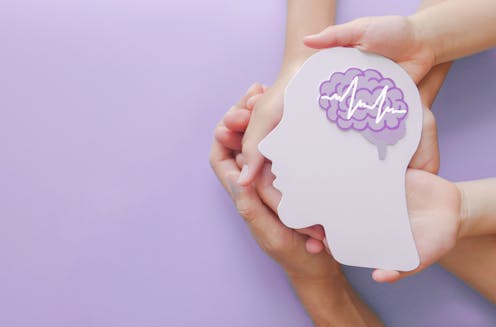
Children with attention deficit hyperactivity disorder (ADHD) do not have a behavioural disorder, nor are they lazy, or lacking in manners and boundaries. Their brains mature in a different way, with different patterns of neurological activity and a number of neurochemical differences. For this reason, ADHD is considered to be a neurodevelopmental disorder.
These neurological imbalances manifest as attention difficulties, disorganisation, or hyperactivity and impulsivity. While these are most noticeable in childhood, where prevalence is estimated at 5%, ADHD can persist into adulthood, where prevalence is 2.5% of the population. ADHD can therefore have social, academic and occupational impacts throughout a person’s life.
Although there are risk factors (such as mothers smoking during pregnancy or low birth weight), these have not been shown to directly cause ADHD. Genetic factors play a more significant role, as 74% of cases are hereditary.
Table of Contents
Diagnosing beyond behaviour
Currently, ADHD diagnoses are mostly made through cognitive and behavioural observations. These tests determine whether a child is having difficulties in relation to what is expected for their age.
However, this can be complemented – or perhaps even replaced in the future – by computational neuroscience. Thanks to research in this discipline, tools are emerging that no longer rely on behavioural observation, but instead study patterns of brain activity. By using mathematical algorithms, they provide information on whether an individual’s brain activity is similar to that of other people with ADHD.
Leer más:
Eight reasons why ADHD diagnoses are increasing
Differences in the brain
Our daily functions – such as thinking, feeling, walking, and so on – are enabled by neurons connecting via our synapses, and these connections generate electrical activity. We know that certain brain waves are associated with particular cognitive states.
In ADHD, divergent patterns have been found in the P3B and N200 waves, which are related to attention, inhibition and self-control. In ADHD, the P3B wave is usually weaker or delayed, reflecting difficulties in attention and information processing.
The N200 wave is involved in detecting errors, controlling impulses, and focusing our attention. In people with ADHD, abnormal functioning of the N200 wave may be related to problems with self-control and attention.
Neuroimaging in smaller brain areas
Neuroimaging technology provides further evidence of neurodevelopmental differences. Techniques such as magnetic resonance imaging (MRI) have found certain areas of smaller size or volume to be relevant in ADHD cases. These include:
-
The corpus callosum, a bundle of nerve fibres that connects the two halves of the brain.
-
The frontal lobe, which is closely related to controlling attention and executive functions.
-
The caudate nucleus, which is involved in the release of dopamine, a hormone that is fundamental for the brain’s reward system, with strong impacts on learning and motivation.
Lower cortex volume has also been found in regions such as the frontal, temporal, parietal and occipital cortex. As mentioned above, various studies have also found a lower volume in frontal areas, especially in orbitofrontal areas. These areas are especially important for self-control and inhibition.
Chemical and metabolic factors
Other techniques, such as positron emission tomography, have detected lower glucose consumption (compared to people without ADHD) in four main areas: the cingulate gyrus (related to emotional regulation); in certain basal ganglia (particularly the caudate nucleus); in the right hippocampus (related to memory); and in the right thalamus (related to sensory processing).
Decreased metabolism in the parietal and temporal regions is also related to maintaining attention.
In addition, people with ADHD show reduced blood flow to white matter in the frontal areas, which are essential for executive functions such as attention, self-control and decision-making. This could explain the difficulties in concentration and impulse control experienced by ADHD sufferers.
Reduced blood supply is also found other areas: the corpus callosum, where it prevents information from passing easily between the two hemispheres; the basal nuclei and the striatum, which are important in regulating of dopamine; and in the occipital, parietal and temporal regions, which may affect visual perception, spatial attention and verbal memory.
Lastly, at the chemical level, some studies report a decrease in dopamine in dopaminergic pathways in ADHD. Dopamine, as mentioned above, is fundamental in the brain’s reward system, meaning it affects motivation, attention and learning.
Ending stigma: ADHD and professional success
Neuroscience has provided enough evidence for us to stop seeing children with ADHD as lazy or rude. As demonstrated by the above examples, it is a neurodevelopmental condition.
This is fundamental to detecting false positives (cases that are considered ADHD but are not), as it can help in reviewing environmental conditions and providing other possible explanations, as well as helping people with ADHD in an appropriate way.
It is essential to provide tools that help sufferers to deal with difficulties and, above all, to make the most of their strengths. All of this should always be done in coordination with schools, families and, if necessary, therapists.
It is true that school can be hard for many children with ADHD, but with the right support, many can go on to become successful adults. Celebrities like Will Smith, Jim Carrey and Justin Timberlake, as well as entrepreneurs like Ingvar Kamprad (Ikea) or Richard Branson (Virgin), are examples of this. The real challenge is therefore not ADHD itself, but how society understands and supports it.
![]()
Teresa Rossignoli Palomeque no recibe salario, ni ejerce labores de consultoría, ni posee acciones, ni recibe financiación de ninguna compañía u organización que pueda obtener beneficio de este artículo, y ha declarado carecer de vínculos relevantes más allá del cargo académico citado.























